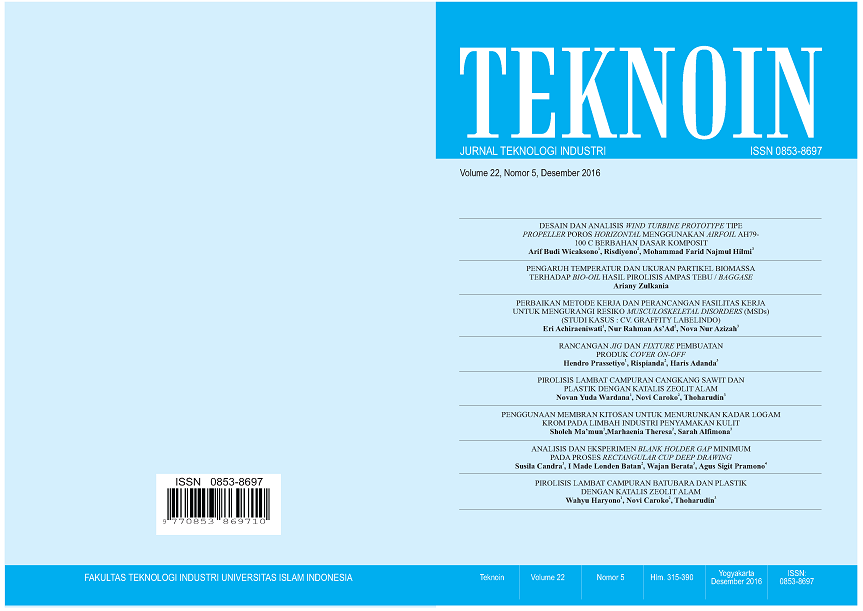Main Article Content
Abstract
The bio-oil production from baggase using pyrolysis process was investigated in this study. A fixed bed reactor was utilized to investigate the effect of pyrolysis temperature and biomass particle size on the yield of bio-oil, tar, biochar and gas and properties of bio-oil. The pyrolysis temperature was ranging from 450 to 550oC, while variations of particle size were -20+30 Mesh and -30+40 Mesh. The operation conditions of the pyrolysis were 15 minutes of resident time, 25oC/minute of heating ramp and 0.5 L/min of N2 flowrate. Optimum conditions obtained for the maximum bio-oil yield (28.11 %wt) were 550oC and -30+40 Mesh of particle size. However, pyrolysis for -20+30 Mesh of biomass particle size had optimum temperature on 500oC which had 27.89%wt of bio-oil yield. On the other hand, all bio-oils were characterized in detail by determining their density, viscosity, pH, acetic acid content and heating value. Bio-oils produced have the following properties: density of 1.0667-1.0867 gr/ml, viscosity of 1.3034-1.7821 cP, pH of 2.3835-2.7865, acetic acid content of 0.4320-0.5600 mg/ml bio-oil, dan heating value of 9.3168-10.8173 MJ/kg. The highest heating value is contented by bio-oil produced with 550oC of temperature pyrolysis and -30+40 Mesh of biomass particle size.
Article Details
License
Authors who publish with this journal agree to the following terms:
- Authors retain copyright and grant the journal right of first publication with the work simultaneously licensed under a Creative Commons Attribution License that allows others to share the work with an acknowledgement of the work's authorship and initial publication in this journal.
- Authors are able to enter into separate, additional contractual arrangements for the non-exclusive distribution of the journal's published version of the work (e.g., post it to an institutional repository or publish it in a book), with an acknowledgement of its initial publication in this journal.
- Authors are permitted and encouraged to post their work online (e.g., in institutional repositories or on their website) prior to and during the submission process, as it can lead to productive exchanges, as well as earlier and greater citation of published work (See The Effect of Open Access).
